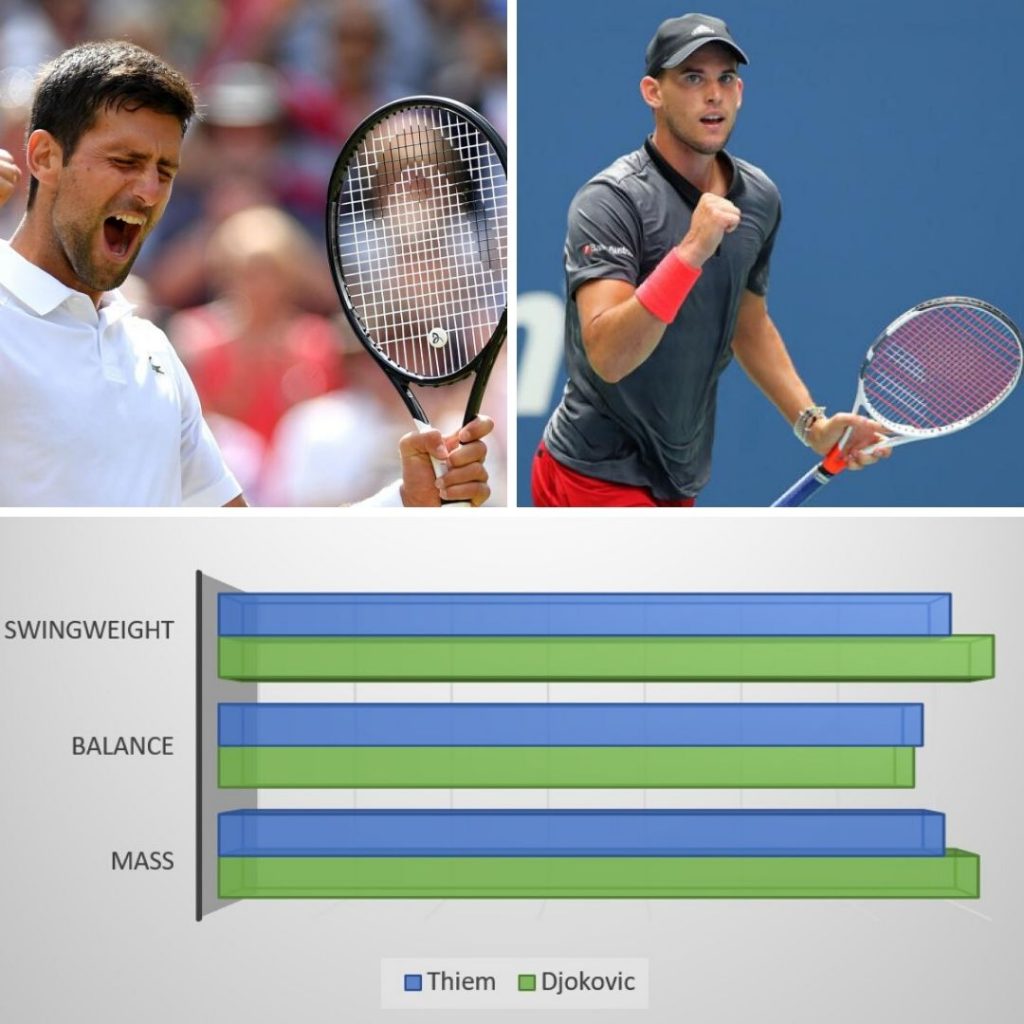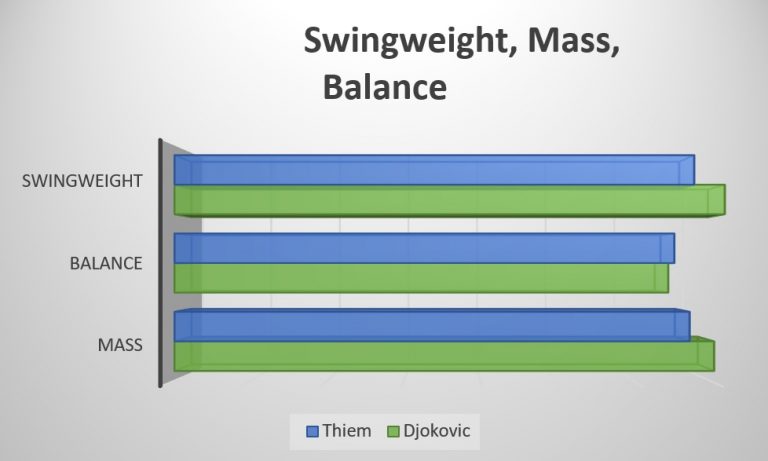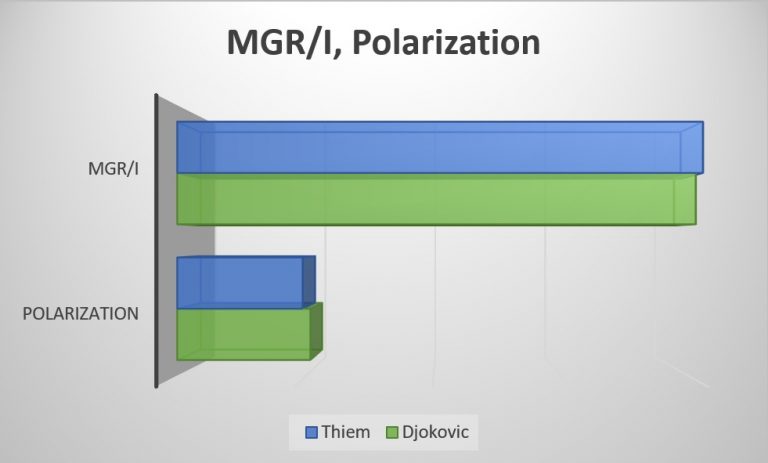
2020 Australian Open Finals
Time for the first Grand Slam finals racket matchup analysis of the year!
In this section, I talk about what the rackets let the players do and how that translates on the match play on the court.
I’m fortunate enough that since I’ve been doing this, all the grand slam finals have featured 2 players that haven’t faced each other in the final before, so I don’t have to repeat my self.
The Australian Open 2020 finals will be featuring Novak Djokovic and Dominic Thiem. I’ve analysed them both in previous articles like this one, as both players are no strangers to the GS finals in recent years. But today let’s take a look at how their rackets and games match each other up. For complete specs check the ATP specifications database.

First let’s take a look at the Mass, Balance and Swingweight comparison.
They both use relatively high swingweight by today’s »modern game« standards, but Novak Djokovic is ahead here with a higher swingweight and mass, making his power ceiling higher in terms of the ball weight (spin + power). Dominic has a less headlight balance and together with lover mass and swingweight that makes for a less polarized racket and higher MGR/I as shown in the picture below.

They both have some lead at the »3&9« positions on the side of the frame, depolarizing their rackets a bit, raising the twistweight and making the rackets more stable forgiving but unmanoeuvrable at the same time. This is especially useful on returns and they both return very similarly, but of course, Novak being the supreme returner as his swingweight is much higher and he can just block back the returns more effectively as long he has the racket on the ball he will make the return.
Dominic Thiem has a bit more breathing room in terms of manoeuvrability and can hit a lot of his shots in the air, unbalanced and so on. A lighter racket with lover swingweight allows him to do that. But on the other hand, you will see Novak hitting most of his shots well balanced with both feet firmly on the ground because he can not produce so much racket head speed just using the arms and upper body like Thiem can when he is flying around the court.
The difference in MGR/I is 0, 28 and as explained here, this is huge. Thiem has a higher MGR/I which enables him to hit through the ball more, rather than carving around it. It also gives him better depth control ane the ability to flatten out his shots when needed easier than Novak does. On the other hand, Djokovic can produce better angles and open up the court more but can’t hit the ball flat so easy. Djokovic relies on angles and the weight of his ball to control the rally and get a shorter ball or simply an unforced error.
Overall like mentioned Djokovic has a higher ceiling when it comes to the weight of the ball (a combination of spin and pace) because his racket is able to transfer more energy to the ball, but only when he is well-positioned and has the time to execute his strokes to achieve maximum racket head speed. This can be an issue especially on his forehand side if Thiem starts attacking that side with pace and a bit flatter shots like he did at the 2019 Top 8 Masters tournament when he beat Novak. He was really attacking the ball hitting it with a lot less topspin that we are used form him being a clay-court specialist. But in 2019 Thiem shortened his swing on the forehand side a bit and he does not have such a bit takeback on his forehand anymore, which was how he was generating massive topspin before.
To sum it up, I believe Thiem should play the same brand of tennis that brought him success the last time they meet. Attacking Djokovic high faster and flatter balls, that will take away time from Djokovic and take away his ability to be perfectly positioned and to execute his shots with the high swingweight. It’s a high-risk high-reward type of tennis that worked for him in London in 2019, but doing it in a final of a Grand slam over potentially 5 sets is a different story.
The plan from Djokovic should be to just execute the essence of his game. Return well and pull Thiem wide with his heavy and angled top-spin shots, making it even more high risk for Thiem to go after his forehand more aggressively and flat, but rather force him in topspin exchanges. Djokovic is also fresher than Thiem. He had relatively easy semi-finals against injured Federer in 3 sets and had 1 more day off. Thiem was apparently feeling a bit sick towards the end of the semi-finals when he orderer coke at the end of the 4-th set.
Considering all this Djokovic will have to play a lot more within his game essence and in line with what his racket enables him to do. That’s why it’s important to build your racket to how you want to play and why great champions only execute the essence of their game to win most of the time when their followers need to come up with specific strategies to combat them, which is not easy, especially in the grand slam setting.
As they will step on the Rod Laver Arena today, as always, remember that this is just the racket matchup analysis, and there are many other factors in play, but to me, the understanding of what the racket enables you to do and what and why is happening on the court.
I try to make the finals more interesting as you can observe the different rackets and strategies behind them at work.